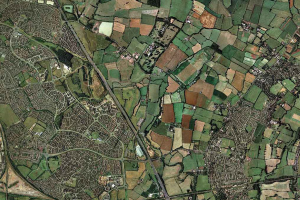Landscape character area
The term ‘landscape’ refers to an area, as perceived by people, whose character is the result of the action and interaction of natural and/or human factors’ (ref European Landscape Convention).
Landscape character refers to a distinct, recognisable and consistent pattern of elements that makes one landscape different from another.
Landscape Character Types (LCTs) are generic, typically homogenous types of landscape that may occur in different parts of the country. They have similar geology, topography, drainage patterns, vegetation, land use, patterns of settlement and aesthetic character.
For more information see: Landscape character type.
Landscape classification is the process of sorting landscape into different types without attaching relative values to different sorts of landscape.
Landscape Character Areas (sometimes described as Local Landscape Character Areas or Regional Landscape Character Areas), are discrete geographical areas of a particular landscape type with a broadly consistent character, which might include:
- pattern of topography
- land use
- vegetation cover
- geology
- cultural and ecological features
- pattern of evolution
- visual and perceptual qualities
- habitats
A landscape character assessment (LCA) identifies and describes variations in the character of the landscape, explaining the combination of elements and features that make landscapes distinctive by mapping and describing character types and areas. LCAs can be used to inform planning policies, allocate land for development, assess planning applications and make environmental assessments. Ref Landscape Character Assessment Guidance for England and Scotland, The Countryside Agency and Scottish Natural Heritage 2002.
See also: Landscape Character Assessment.
National Character Area (NCA) profile documents explain how environmental evidence and information about places can be accessed and used. They divide England into 159 distinct natural areas defined by a unique combination of landscape, biodiversity, geodiversity, history, and cultural and economic activity. Their boundaries follow natural lines in the landscape rather than administrative boundaries.
[edit] Related articles on Designing Buildings
- Ecological impact assessment.
- Ecological survey.
- Environmental impact assessment.
- Green belt.
- Historic Landscape Characterisation.
- Historic Land-use Assessment.
- In-combination effects.
- Landscape and Visual Appraisal.
- Landscape and Visual Impact Assessment.
- Landscape architect.
- Landscape Character Assessment.
- Landscape character type.
- Landscape quality.
- Local Landscape Area.
- Natural area.
- Sharawadgi.
- Strategic ecology framework SEF.
- Visual impact.
Featured articles and news
Social and affordable housing, a long term plan for delivery
The “Delivering a Decade of Renewal for Social and Affordable Housing” strategy sets out future path.
A change to adoptive architecture
Effects of global weather warming on architectural detailing, material choice and human interaction.
How big is the problem and what can we do to mitigate the effects?
Overheating guidance and tools for building designers
A number of cool guides to help with the heat.
The UK's Modern Industrial Strategy: A 10 year plan
Previous consultation criticism, current key elements and general support with some persisting reservations.
Building Safety Regulator reforms
New roles, new staff and a new fast track service pave the way for a single construction regulator.
Architectural Technologist CPDs and Communications
CIAT CPD… and how you can do it!
Cooling centres and cool spaces
Managing extreme heat in cities by directing the public to places for heat stress relief and water sources.
Winter gardens: A brief history and warm variations
Extending the season with glass in different forms and terms.
Restoring Great Yarmouth's Winter Gardens
Transforming one of the least sustainable constructions imaginable.
Construction Skills Mission Board launch sector drive
Newly formed government and industry collaboration set strategy for recruiting an additional 100,000 construction workers a year.
New Architects Code comes into effect in September 2025
ARB Architects Code of Conduct and Practice available with ongoing consultation regarding guidance.
Welsh Skills Body (Medr) launches ambitious plan
The new skills body brings together funding and regulation of tertiary education and research for the devolved nation.
Paul Gandy FCIOB announced as next CIOB President
Former Tilbury Douglas CEO takes helm.
UK Infrastructure: A 10 Year Strategy. In brief with reactions
With the National Infrastructure and Service Transformation Authority (NISTA).
Ebenezer Howard: inventor of the garden city. Book review.
Airtightness Topic Guide BSRIA TG 27/2025
Explaining the basics of airtightness, what it is, why it's important, when it's required and how it's carried out.























